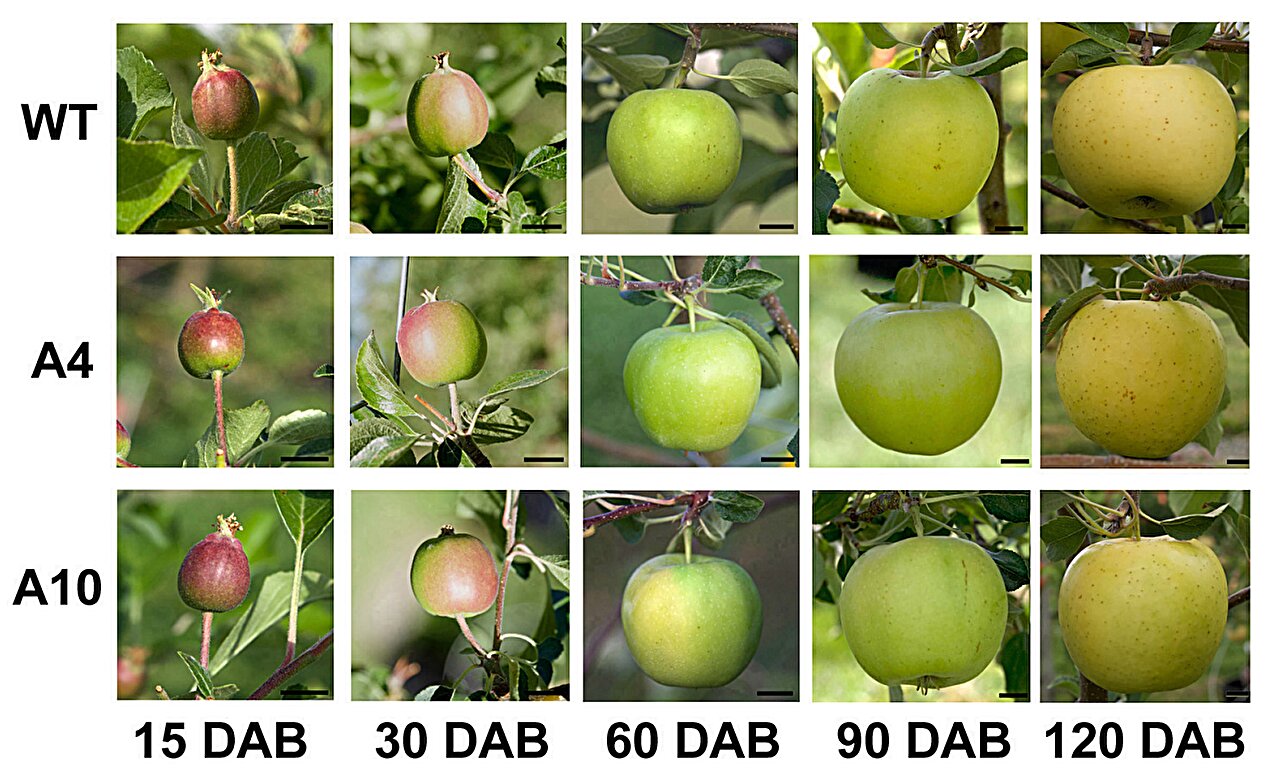A groundbreaking discovery has revealed that a cell protein, long thought to merely serve as a structural scaffold for DNA, plays a direct role in regulating the transcription of DNA into RNA. This process represents the initial step in how an organism’s genetic code is expressed, providing a deeper understanding of the fundamental mechanics of life. This remarkable finding, derived from studies on apple cells, has implications for all nucleus-containing organisms, including humans.
The research, published on December 20 in Plant Cell, represents a collaborative effort between researchers from Cornell University, the University of California, Davis, and Shandong Agricultural University in China. It challenges longstanding assumptions about the role of linker histones, a type of protein first identified in the 19th century.
In every living organism, the DNA housed in each cell contains the full genetic blueprint. However, how this genetic information is interpreted determines whether a cell contributes to forming a leaf, fruit, heart, or lungs. This interpretation is governed by specialized proteins known as transcription factors. These proteins act as master regulators, guiding the expression of genes and orchestrating the development and function of an organism. Consequently, transcription factors have become a critical focus for scientists in fields ranging from plant science to medicine. They hold immense potential for improving crop varieties, developing new pharmaceuticals, and addressing genetic diseases.
Historically, linker histones were understood primarily as structural components of DNA. Their role was thought to be indirect—providing organization, folding, and structural stability to the DNA molecule. However, this new research reveals a novel function for linker histones: directly influencing gene expression as transcription factors.
“This is the first case, in any species, to demonstrate that linker histones directly regulate gene expression,” explained Lailiang Cheng, senior author of the study and professor in the Horticulture Section of the School of Integrative Plant Science at Cornell. Cheng emphasized the broader implications of this discovery, noting that researchers studying other plants, animals, and humans might leverage these findings to uncover genes targeted by linker histones, potentially shedding light on disease development and other vital biological processes.
This breakthrough came during a study of the processes that influence sugar and acid accumulation in apples—factors critical to the fruit’s taste and flavor. Cheng and his team sought to unravel the molecular mechanisms connecting sugars like sorbitol to malic acid, a key compound influencing apple flavor.
The researchers began by genetically modifying apple plants to produce less sorbitol, a predominant sugar in apple leaves that is converted to fructose in the fruit. They found that the modified plants also accumulated less malic acid. To investigate this connection further, the team used RNA sequencing to study gene expression patterns in proteins responsible for sorbitol and malic acid accumulation. This analysis revealed five genes encoding transcription factor proteins, one of which closely resembled a gene known to produce a linker histone protein in Arabidopsis, a plant commonly used in genetic and biological research.
By studying a mutant version of Arabidopsis provided by the University of Zürich, the researchers confirmed that the identified gene in apples indeed encoded a linker histone. Unexpectedly, they discovered that this linker histone directly binds to the promoter region of another gene, which encodes a protein responsible for transporting malic acid for storage in apple cells. This binding directly regulates the gene’s expression, marking the first evidence of a linker histone functioning as a transcription factor.
“This discovery opens the door to exploring other genes that linker histones may regulate directly,” Cheng noted. Future research could examine how this linker histone operates in other plant species or investigate its potential roles in other biological processes, including disease development and stress response.
The study’s implications are far-reaching. In plant science, understanding how linker histones influence gene expression could enable breeders to enhance specific traits, such as flavor profiles in fruit or resistance to environmental stress. In medicine, similar mechanisms in human cells could inform the development of therapies targeting genetic disorders or diseases linked to gene regulation.
The research team emphasized the collaborative nature of the project. The paper’s first author, Da-Gang Hu, a former postdoctoral associate in Cheng’s lab and now a professor at Shandong Agricultural University, played a pivotal role in the study. Additional contributors included Zhangjun Fei, a professor at the Boyce Thompson Institute, and postdoctoral researchers Mengxia Zhang, Chunlong Li, and Dong Meng from Cheng’s lab.
In the immediate future, the researchers plan to investigate other genes that may be directly regulated by this linker histone, potentially revealing broader roles for these proteins across different species. Applied studies could also explore the practical use of sorbitol manipulation to enhance malic acid content in apple crops, improving fruit quality for consumers.
This discovery redefines our understanding of linker histones and gene regulation, providing new insights into the molecular machinery of life. As researchers continue to unravel the complexities of these proteins, the findings could lead to innovations in agriculture, medicine, and beyond.
Reference: Da-Gang Hu et al, A Linker Histone Acts as a Transcription Factor to Orchestrate Malic Acid Accumulation in Apple in Response to Sorbitol, The Plant Cell (2024). DOI: 10.1093/plcell/koae328
Think this is important? Spread the knowledge! Share now.
